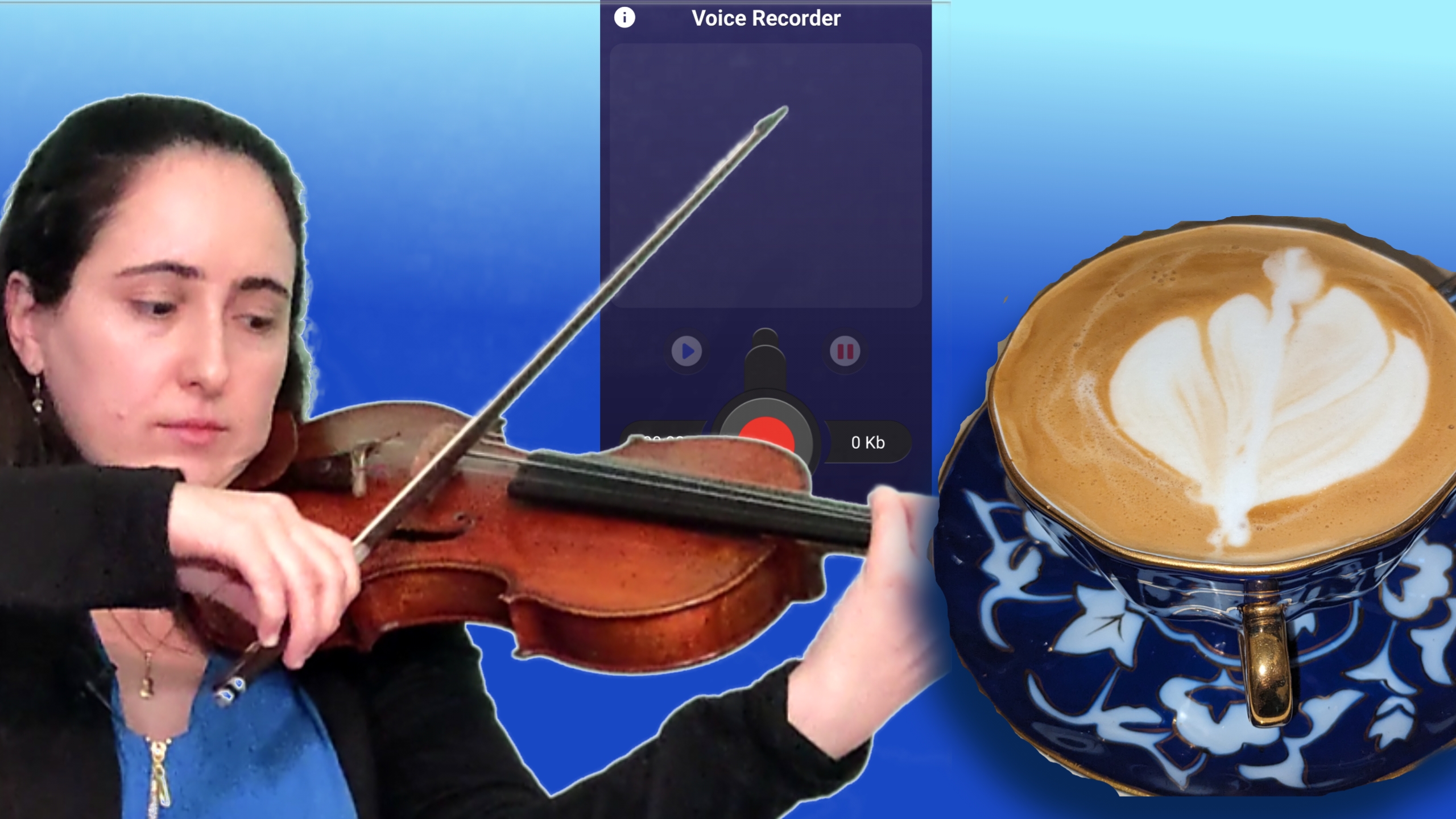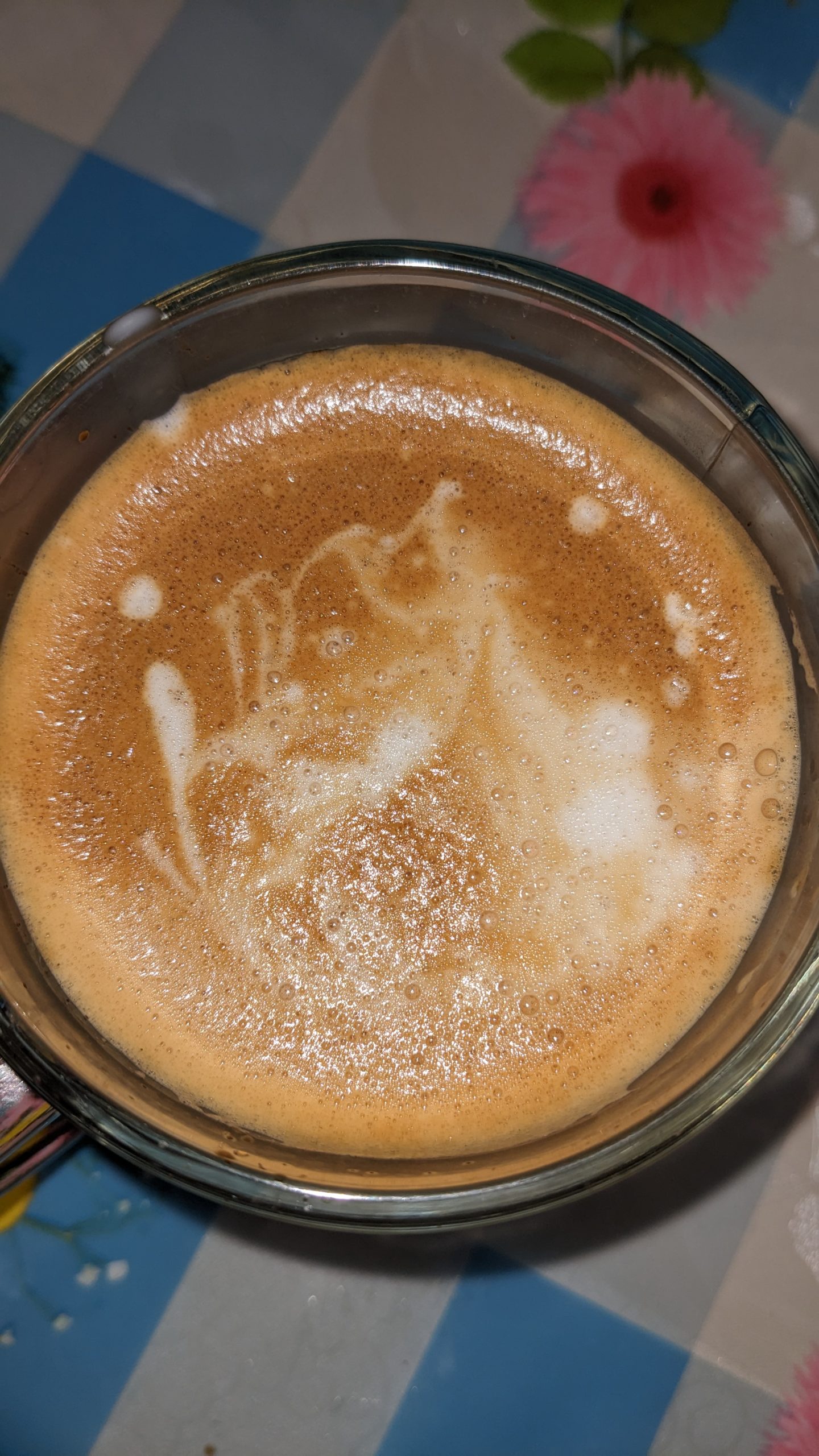
This New Year, I decided to learn how to make latte art – simply out of enthusiasm. I bought my first espresso machine: the Breville Bambino. Small enough to fit on the limited kitchen counter space, with all the basic features one needs to make a good latte. Limited to non-dairy options, my first mission was to learn the basics: how to pull a satisfactory espresso shot with decent level of crema and how to time and angle the milk pitcher to achieve a specific texture of foam while steaming oat milk. Thanks to the wonderful world of YouTube for many free tutorials on this.
I have never worked at a cafe in my life but am quite an avid customer. Since I’m not serving dozens of people a day at home, this limits me to just a handful of practice sessions per week. As you can imagine, unlike with violin, these are very short practice sessions. There are no do-overs. There is no opportunity of consecutive trial and error when learning how to pour basic latte art with such a limitation – at least not in a row.
My first “creations” looked something like this:
Two months later, this is my progress so far:
So how is this process similar to violin practice?
- The basics are the underlying foundation toward success. Homing in on technical development and/or consistency (i.e. – scales, etudes, fine-tuning small details of our posture, bow hold, finger weight distribution, the delicate balance between stability and flexibility, etc) getss our playing to a higher level.
- Timing and momentum is everything. For example, in violin, good bow technique depends on a good preparation, action, and follow-through. Smooth bow changes depend on a sequential motion that actually involve our total body. One motion affects the next. Similarly, for good left hand technique, we need to anticipate what is coming next (whether it’s preparing the next finger early for a clean string crossing, or preparing the arm to be in the best position for a shift).
- It can get frustrating. “Ugh! What am I doing wrong? It was fine yesterday!” – sounds familiar?
Performance Practice
When it comes down to practicing something like latte art with so few opportunities, it imitates a very specific kind of practice that we are all familiar with – performance practice. Ideally, to do a good “version” of performance practice, we choose a piece (or section of a piece, excerpt, etc) and have just one shot at it, at a specified place and time. It can be either for an audience or at least after pressing the “record” button on our phones.
In both, there is an opportunity to practice two much-neglected skills that can help us improve when it comes down to stage presence and dealing with performance anxiety: centering and visualization.
Only One Shot
What if we didn’t have the luxury of so much trial and error when we have a normal practice session? What if we made every repetition matter as much as possible, as if it was the only one we were allowed to make for the day? When there is a ton of music to learn in a short time period (shoutout to freelancers who have to play multiple programs a week), this might be the case on certain days, for some sections of music. Also, for anyone recovering from an injury or just getting back into playing after a long break, it’s usually a good idea to start with short sessions.
Sounds like a lot of pressure to put on oneself – but perhaps this idea opens up the opportunity to add more mental practice into the mix and learn to practice even smarter. Even if we plan to do multiple repetitions of something, making each one count that much more should yield to better progress.


